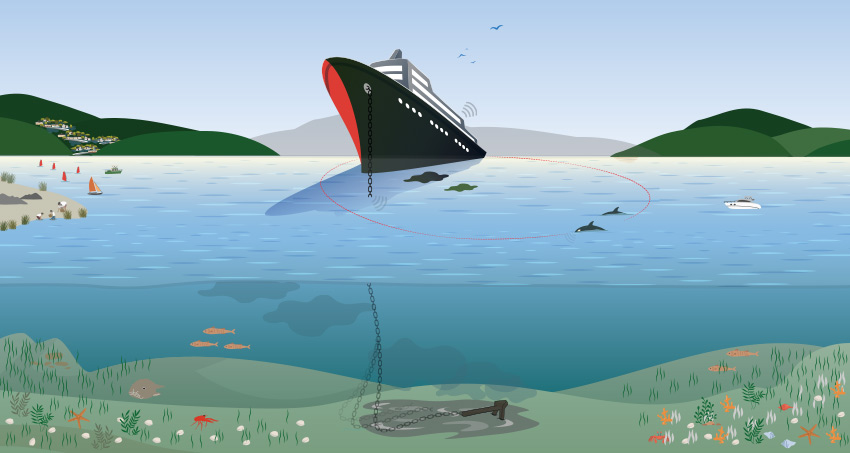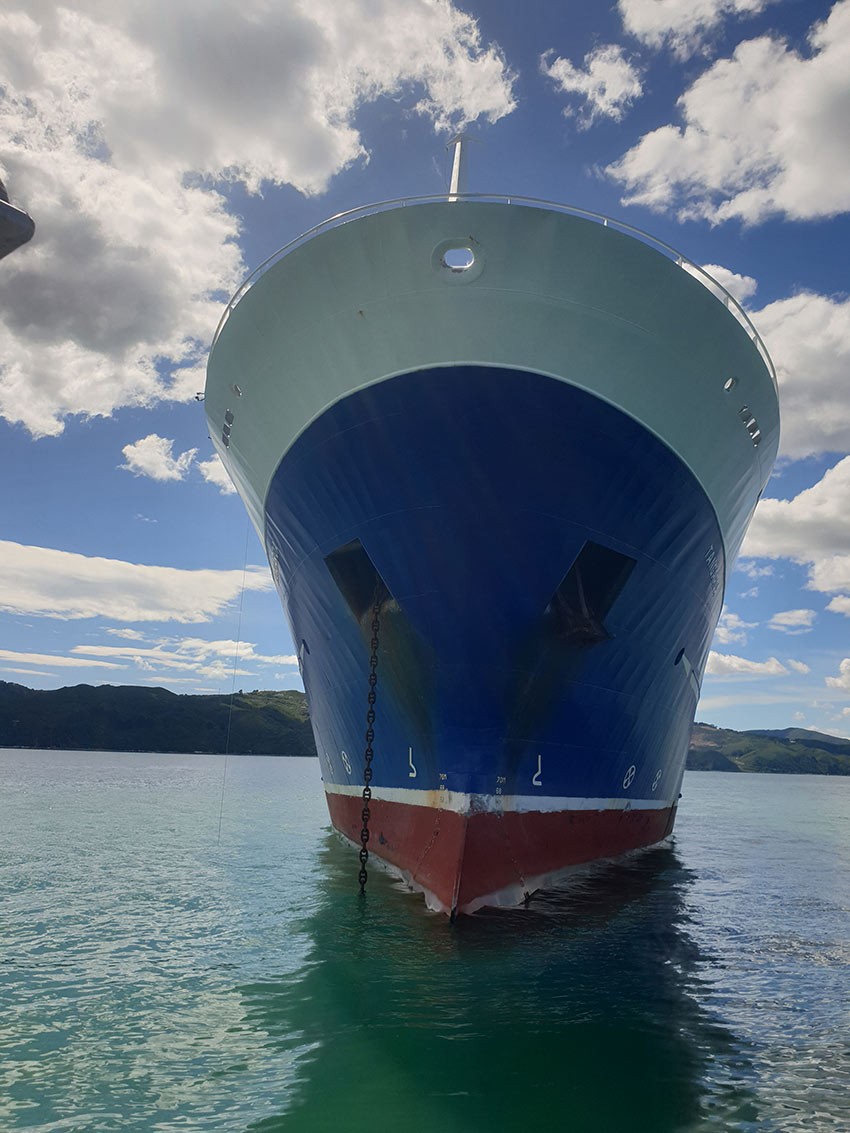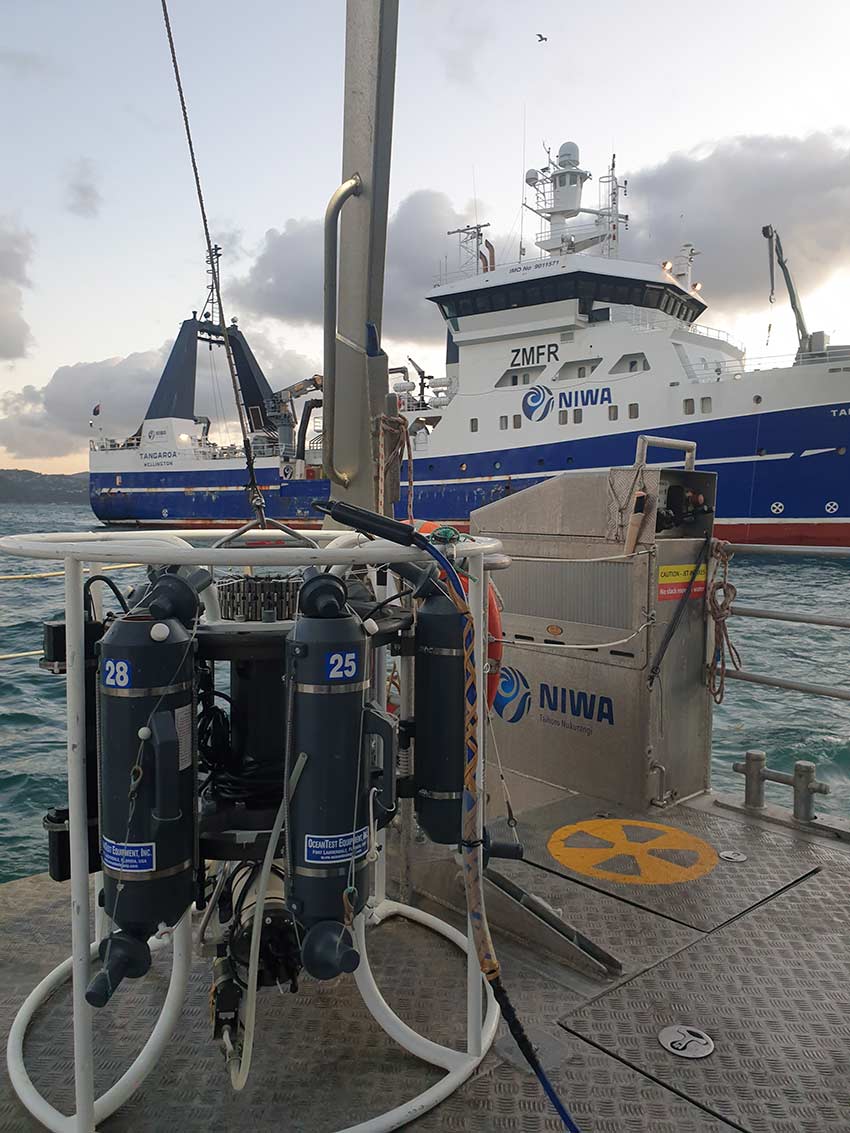Impacts of ship anchoring in Aotearoa New Zealand
Lurking under the COVID-19 pandemic came the great but little known “ports congestion pandemic”, where ships around the world were forced to wait on anchor for weeks or months for port access.
With shipping congestion predicted to quadruple in the next 25 years, the ports congestion pandemic provided a glimpse of the future – a snapshot of intense anchorage becoming the global norm. It also highlighted that we have little understanding of how routine anchoring practices damage coastal and marine environments, and undermine climate resilience.

The research
The project ‘Redesigning anchoring practices for a more sustainable shipping industry’ was set up to unravel the impacts of anchoring. Current ship anchoring practices could be causing damage beyond their immediate physical footprints, which has implications for wider ecosystems, economies and the people who rely on the health of the shallow marine zone.
The research team are collecting data on physical, chemical, biological, and ecological changes at case study anchorage sites around Aotearoa New Zealand. They will be able to use this information to determine critical changes in biodiversity and marine ecosystem.
The data will also help them identify key factors that make an environment vulnerable to ship anchoring, which could inform marine management efforts. For example, a high proportion of muddy sediment on the seabed may result in longer resuspension and redistribution of sediments. So ships could be encouraged to anchor away from muddy sediment areas within the allocated anchoring sites.
Ultimately, the team is aiming to co-develop an environmental framework for creating anchorage zones that better account for environmental vulnerability and a healthier marine environment. They also want to redesign anchoring practices under current and future port congestion scenarios, to reduce anchoring requirements and find alternative, low-impact solutions that are better for the planet.
The team
This research is funded by the Ministry for Business, Innovation & Employment, Smart Ideas funding scheme.
The team is co-led by Te Whare Tūroa steering committee member Dr Marta Ribó (AUT), and Dr Sally Watson (Earth Sciences New Zealand), who are both experts in marine geoscience. They are collaborating with a broader team of researchers and experts in marine ecology and ecological modelling, mātauranga Māori, biology, biogeochemistry, marine restoration, environmental management and maritime logistics.
They are also working closely with mana whenua (Taranaki Whānui, Te Ātiawa), councils, the maritime sector, as well as international researchers from Australia, the UK, Spain and the USA.
Related news

